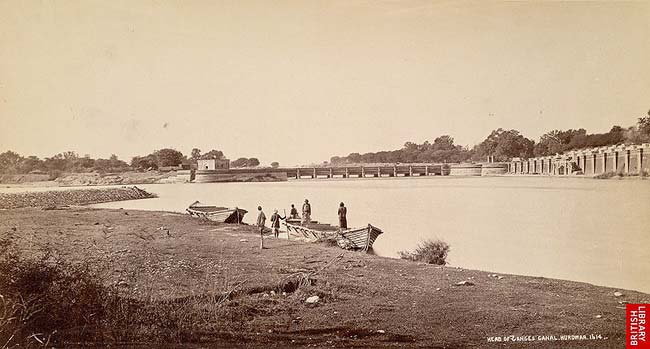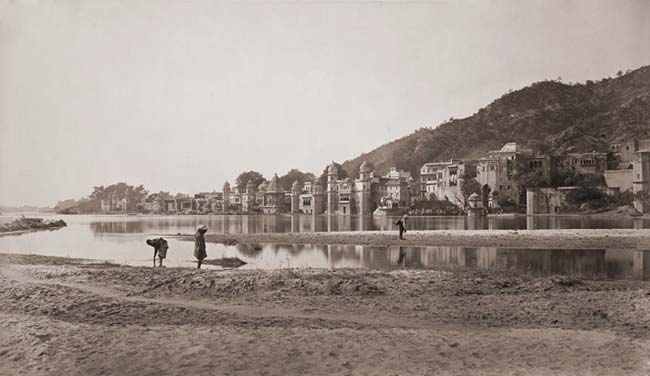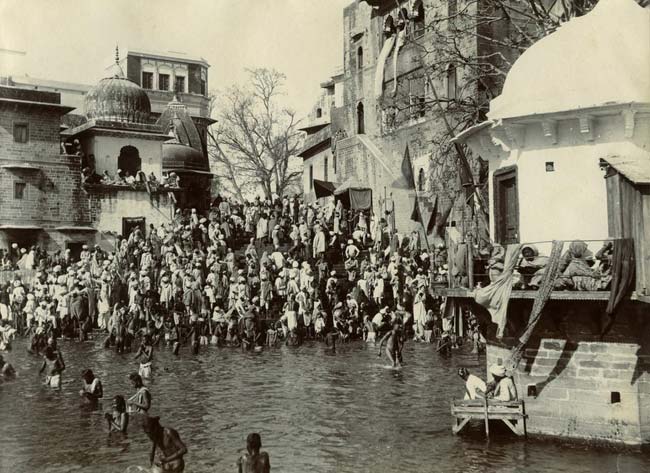|
|
 Haridwar
A paradise for nature lovers, Haridwar presents a kaleidoscope
of Indian culture and civilization. In the scriptures it has
been variously mentioned as Kapilsthan, Gangadwar
and Mayapuri. It is also an entry point to the
Char Dham (the four main centers of pilgrimage in Uttarakhand
viz, Badrinath, Kedarnath, Gangotri, and Yamunotri),
hence, Shaivaites (followers of Lord Shiva) and Vaishnavites
(followers of Lord Vishnu) call this place Hardwar and Haridwar
respectively, corresponding to Har being Shiv and Hari being
Vishnu. Haridwar
A paradise for nature lovers, Haridwar presents a kaleidoscope
of Indian culture and civilization. In the scriptures it has
been variously mentioned as Kapilsthan, Gangadwar
and Mayapuri. It is also an entry point to the
Char Dham (the four main centers of pilgrimage in Uttarakhand
viz, Badrinath, Kedarnath, Gangotri, and Yamunotri),
hence, Shaivaites (followers of Lord Shiva) and Vaishnavites
(followers of Lord Vishnu) call this place Hardwar and Haridwar
respectively, corresponding to Har being Shiv and Hari being
Vishnu.
 |
 |
 |
| |
Head of Ganges Canal, Haridwar,
1894-1898

|
|
|
 |
 |
 |
The legendary King, Bhagirath, the great-grandson of the Suryavanshi
King Sagar (an ancestor of Rama), is said to have brought the
river Ganges down from heaven, through years of penance in Satya
Yuga, for the salvation of 60,000 of his ancestors from the
curse of the saint Kapila, a tradition continued by thousands
of devout Hindus, who brings the ashes of their departed family
members, in hope of their salvation. Lord Vishnu is said to
have left his footprint on the stone that is set in the upper
wall of Har-Ki-Pauri, where the Holy Ganges touches it at all
times.
Haridwar came under the rule of the Maurya Empire (322185 BCE),
and later under the Kushan Empire (c. 1st3rd centuries). Archaeological
findings have proved that terra cotta culture dating between
1700 BCE and 1200 BCE existed in this region. First modern era
written evidence of Haridwar is found in the accounts of a Chinese
traveller, Huan Tsang, who visited India in 629 AD. during the
reign of King Harshavardhan (590647) records Haridwar as 'Mo-yu-lo',
the remains of which still exist at Mayapur, a little to the
south of the modern town. Among the ruins are a fort and three
temples, decorated with broken stone sculptures, he also mentions
the presence of a temple, north of Mo-yu-lo called 'Gangadwara',
Gateway of the Ganges.
Being one of the oldest living cities, Haridwar finds its mention
in the ancient Hindu scriptures as it weaves through the life
and time stretching from the period of the Buddha, to the more
recent British advent. Haridwar has a rich and ancient religious
and cultural heritage. It still has many old havelis and mansions
bearing exquisite murals and intricate stonework. One of the
two major dams on the river Ganges, the Bhimgoda, is situated
here. Built in 1840s, it diverts the waters of the Ganges to
the Upper Ganges Canal, which irrigated the surrounding lands.
Though this caused severe deterioration to the Ganges water
flow, and is a major cause for the decay of the Ganges as an
inland waterway, which till 18th century was used heavily by
the ships of the East India Company, and a town as high up as
Tehri, was considered a port city. The headworks of the Ganges
Canal system are located in Haridwar. The Upper Ganges Canal
was opened in 1854 after the work began in April 1842, prompted
by the famine of 1837-38. The unique feature of the canal is
the half-kilometre-long aqueduct over Solani river at Roorkee,
which raises the canal 25 metres above the original river.
 |
 |
 |
| |
Haridwar From Opposite Bank of
The Ganges, 1866

|
|
|
 |
 |
 |
'Haridwar Union Municipality' was constituted in 1868, which
included the then villages of Mayapur and Kankhal. Haridwar
was first connected with railways, via Laksar, through branch
line in 1886, when the Awadh and Rohilakhand Railway line was
extended through Roorkee to Saharanpur, this was later extended
to Dehradun in 1900.
In 1901, it had a population of 25,597 and was a part of the
Roorkee tehsil, in Saharanpur district of the United Province,
and remained so till the creation of Uttar Pradesh in 1947.
 |
 |
 |
| |
Main Bathing Ghat, Haridwar, 1880

|
|
|
 |
 |
 |
Haridwar has been an abode of the weary in body, mind and spirit.
It has also been a centre of attraction for learning various
arts, science, and culture. The city has a long-standing position
as a great source of Ayurvedic medicines and herbal remedies
and is home to the unique Gurukul (school of traditional education),
including the Gurukul Kangri Vishwavidyalaya, which has a vast
campus, and has been providing traditional education of its
own kind, since 1902. Development of Haridwar took an upturn
in the 1960s, with the setting up of a temple of modern civilization,
BHEL, a 'Navratna PSU' in 1962, which brought along not just
a its own township of BHEL, Ranipur, close to the existing Ranipur
village, but also a set of ancillaries in the region. The University
of Roorkee, now IIT Roorkee, is one of the oldest and most prestigious
institutes of learning in the fields of science and engineering.
 |
 |
 |
| |
Har Ki Pauri, Haridwar, 1820

|
|
|
 |
 |
 |
|
|
|
|
